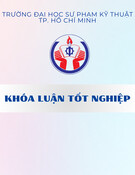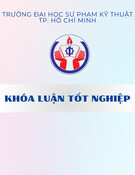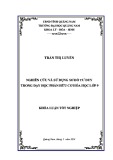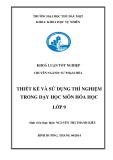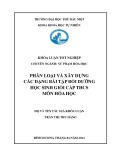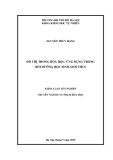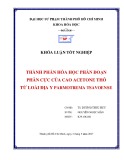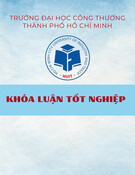
2
4. Research on cytotoxic activity of hybrid compounds synthesized on three
human cancer cell lines including KB (carcinoma, Hep-G2 (liver cancer) and
Lu (non-small cell lung cancer).
3. New points of the dissertation
a. Successfully synthesized erlotinib hidrocloride according to the new
improvement process
b. Synthesis of 23 new quinazoline derivatives in which there were 19
derivatives containing triazole rings:
* 4 derivatives of erlotinib and different azides via triazole bridges
* 4 derivatives of quinazoline-4- amine containing crown ether group in
position C-6, C-7 following a completely new path. These derivatives are used to
hybridize with other active azides via triazole bridges by click reaction.
* 15 hybrid compounds of quinazoline crown ether and azides via triazole bridges
c. The structure of new hybrid compounds has been confirmed from the
results of analysis of infrared spectral data (IR), nuclear magnetic resonance
spectroscopy (1H-NMR and 13C-NMR, HMBC, HSQC) and mass
spectroscopy (HRMS).
d. Evaluation of activity of 19 new quinazoline derivatives on three human
cancer cell lines including KB (carcinoma, Hep-G2 (liver cancer) and Lu
(non-small cell lung cancer) in which there are 13 substances that can cause
investigated cancer cell toxicity. Among them there are 8 substances exhibiting
strong anti-cancer cell activity with the value of IC50 from 2 to 6 µM.
e. Using protein docking simulation to predict the target activity of
compounds 120d, 122a, 122b, 123c
f. Synthesized Compound 122a which has the strongest inhibitory activity
for all three KB cell lines, Hep-G2 and Lu with IC50 values of 0.04 µM, 0.14
µM and 1.03 µM, respectively, 100 times higher than erlotinib. The 123c
compound has IC50 value (1.49; 1.61; 1.81 µM) equivalent to the Ellipticine
standard (IC50 is 1.95; 2.72; 1.38 µM, respectively).







